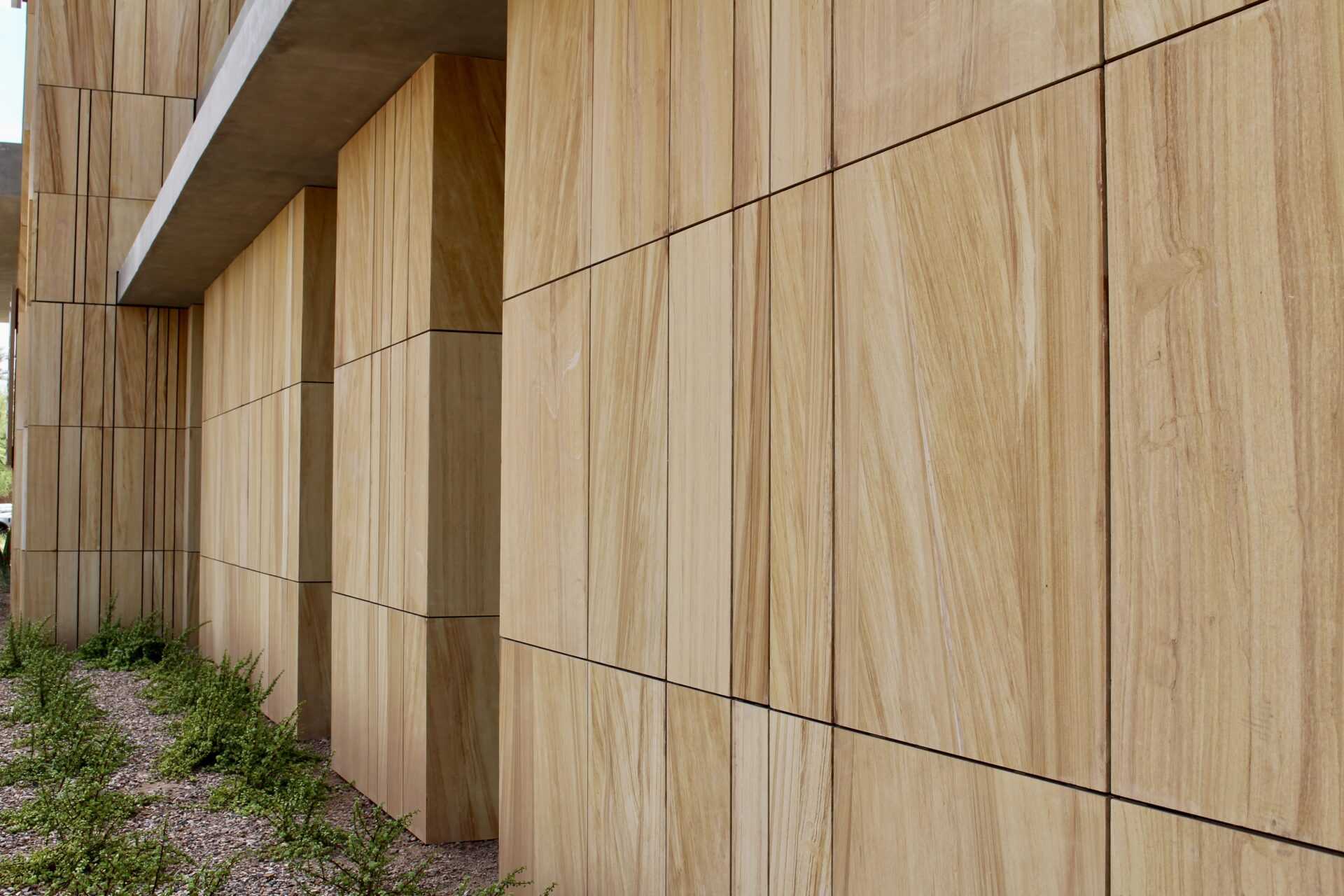The architecture of Creighton University’s campus in downtown Phoenix stands out as a modernist vision and interpretation of traditional university architecture. A key feature in establishing this unique design aesthetic is the project’s thoughtful and extensive stone masonry.
The natural stone selected for the project is Teakwood, a quartzitic sandstone with coloration that echoes and reflects the desert of the Southwest. The stone was selected for both its harmonious color tones as well as its linear wood grain like natural veining, which running vertical in its installation orientation accentuates the height of the project’s seven story tower.
The design of the stone masonry encompassing approximately 320,000 lbs of natural stone masonry product by the architecture team pushes all boundaries. Approximately 1,500 unique profiles of the stone masonry were dreamed up and drafted, with pieces varying in length, width, thickness, and shape. The end design result is stunning with the variety of different pieces coming together in a unified manner that draws great visual interest by creating texture, angles, crevices, and light-shadow interplay in the facade. The project’s base is dressed in the stone and then rises up in its seven story tower where the added height of the stone above the pedestrian adds an amazing concept of dimensionality with the different thickness pieces projecting out each at their own depth. All of these pieces were fabricated at the quarry with slot kerfs and miters by a CNC saw machine.
The stone masonry continues into the lobby with the same quartzitic sandstone creating a unified exterior-interior design for the users of the building as they walk in.
Further stone masonry can be found in the project’s chapel where a limestone from Jerusalem was chosen for its historic and religious history appropriate for a chapel. The stone was fabricated into a modern linear format panel that tapers from thick to thin to create dimensionality. Corner conditions were treated by the stone masons chiseling on site the end of each piece and installing in a butt joint.
Equally impressive as the stone masonry design is the installation which required three distinct masonry installation methods.
The exterior stone masonry was all mechanically fastened utilizing a unique European system that attaches to the stone by both slot Kerf channels on the tops and bottoms and also Kiel holes drilled into the back of the stone with an anchor that fits into the hole. This installation method and system was engineered to accommodate the various thickness of stones projecting out as well as the open joint rain screen design. Extensive logistical skill was required to lift up each piece of this large format stone on the exterior of the facade in a near zero footprint site in downtown Phoenix, particularly up the seven story tower. The craftsmanship required to set these large format pieces with distinct dimensions and thicknesses particularly at such a height stands out as a major feat.
The quartzitic sandstone stone masonry on the inside of lobby was installed with a different installation method. These pieces were all set with a high tech epoxy based mortar designed for durable chemical bond formation.
The Jerusalem limestone stone masonry in the chapel was installed in a third installation method utilizing a polymer modified lightweight adhesive mortar.
This project stands out in its unique and innovative stone masonry design and architecture. The boundary pushing design is pulled off masterfully, no small feat and requiring a high level of coordination, creativity, and craftsmanship between the architect, engineer, general contractor, stone fabrication and supply team , and stone masonry installation contractor.
Designed by Butler Design Group
Built by Okland Construction
Installed by Sun Valley Masonry

